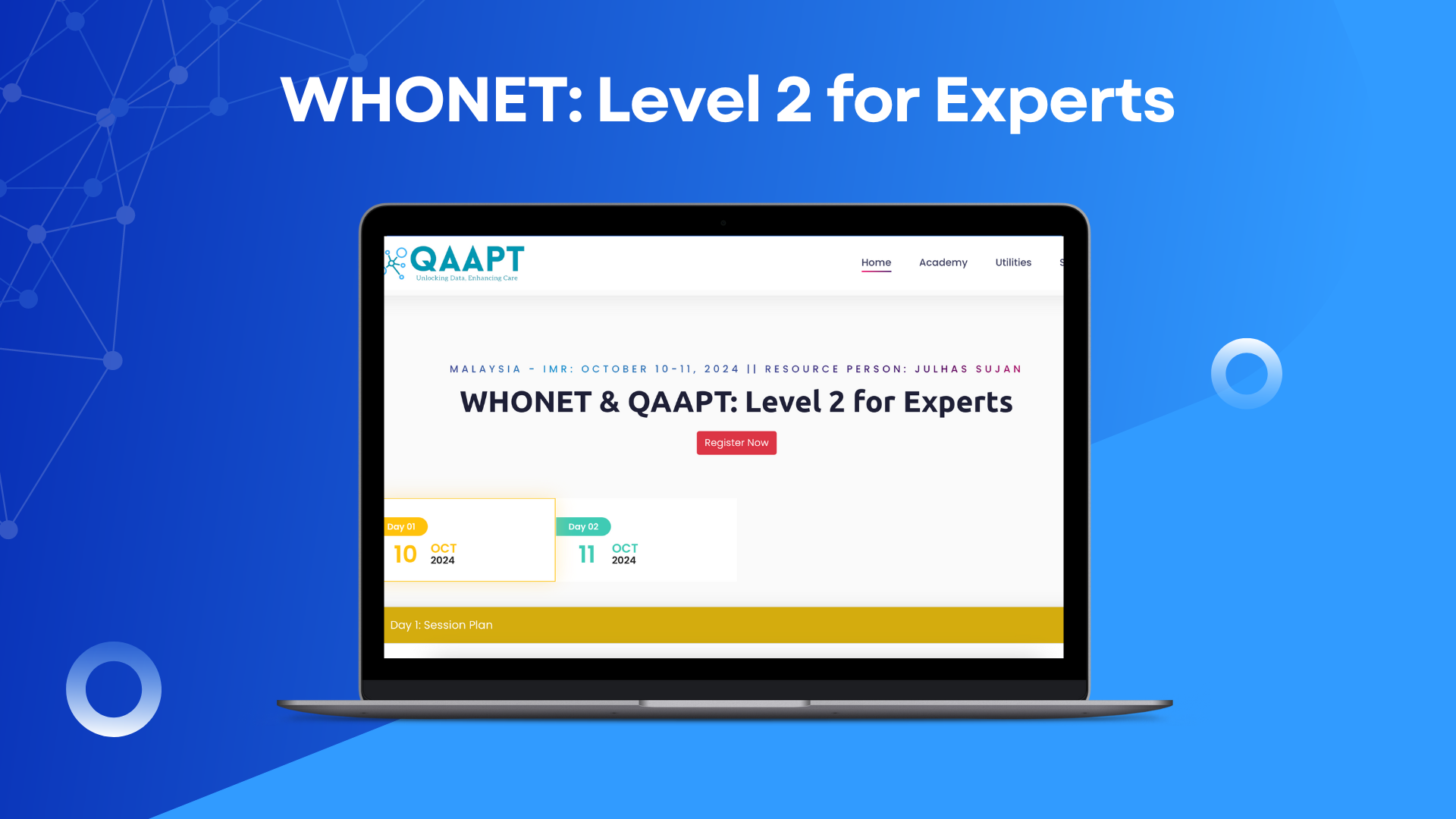| # | Time | Session | Speaker | Duration |
|---|---|---|---|---|
| 1 | 8.00 – 9.00 am | Registration for participants | All Participants | 60 Min |
| 2 | 9.00 – 9.20 am | Overview of National Antibiotic Surveillance report | Dr. Rohaidah Hashim | 20 Min |
| 3 | 9.20 – 9.30 am | Introduction to the Resource Person | Dr. Rohaidah Hashim, Julhas Sujan | 10 Min |
| 4 | 9.30 – 10.00 am | Tea break | ||
| 5 | 10.00 – 10.15 am | Pre-Test using SurveyAMR.com platform | All Participants | 15 Min |
| 6 | 10.15 – 11.15 am |
|
|
60 Min |
| 7 | 11.15 – 12.30 noon |
|
|
75 Min |
| 8 | 12.30 – 2.00 pm | Lunch Break | ||
| 9 | 2.00 – 3.00 pm |
|
|
60 Min |
| 10 | 3.00 – 3.30 pm | Tea Break | ||
| 11 | 3.30-4.30pm |
|
|
60 Min |
| 12 | 4.30 - 5.00 pm |
|
|
30 Min |
Course Name: WHONET & QAAPT: Level 2 for Experts
DescriptionIn this course, you will gain a comprehensive understanding of WHONET, including troubleshooting common issues, BacLink data conversion, and advanced features; QAAPT qLoad for data integration, as well as generating trends, patterns, and antibiograms. This course is specifically designed for the Institute for Medical Research and the National Institutes of Health, Malaysia.
WHONET is a free desktop Windows application for the management and analysis of microbiology laboratory data with a particular focus on antimicrobial resistance surveillance developed and supported by the WHO Collaborating Centre for Surveillance of Antimicrobial Resistance at the Brigham and Women's Hospital in Boston, Massachusetts.
QAAPT, which stands for Quick Analysis of Antimicrobial Patterns and Trends, is a free, web-based tool for visualizing antimicrobial resistance data. Developed by the CAPTURA project, QAAPT is designed for use by decision-makers, including healthcare professionals, national AMR coordinators, microbiologists, technologists, and practitioners involved in AMR surveillance or microbiology laboratory work. It seamlessly integrates with WHONET software, allowing for the direct importation of WHONET SQLITE and CSV files.

